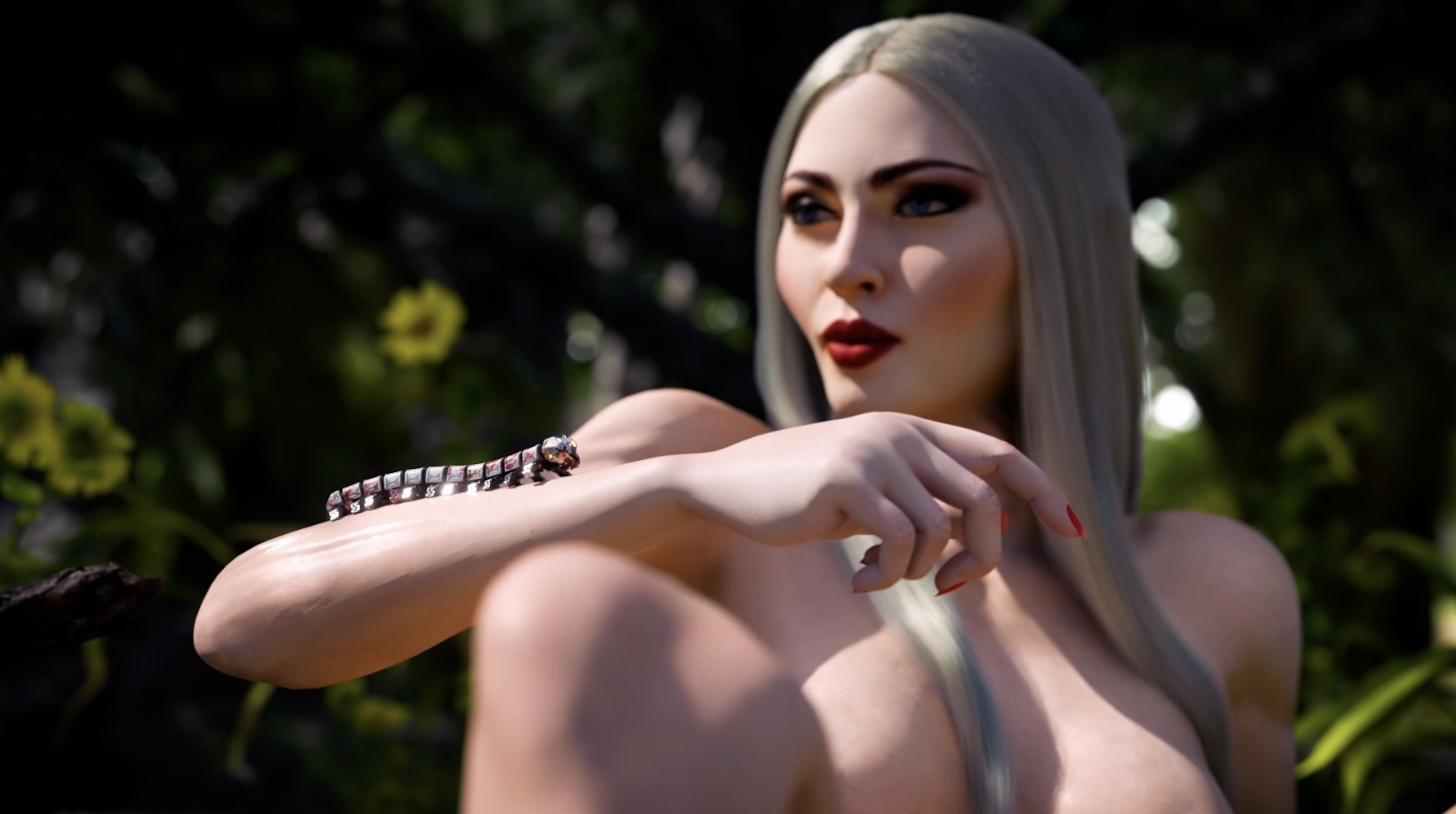The sonic artist and producer Mike Dean has produced material with and for musicians like Tupac, Kanye West, and Beyoncé, infusing beats and melodies with hip-hop influences and instrumental symphonies. Last year, he released an album entitled 4:20 and took time amid the pandemic to brainstorm a sequel.
Serendipitously, he connected with Shepard Fairey through a mutual friend, the art collector Larry Walsh. Having never met before, they knew of and respected each other’s work and were eager to find a way to creatively collaborate. From afar, they first put together Being Home During COVID, a showcase of sorts that revealed how art and music can connect humanity when social distancing is ever-present. Soon after, they imagined a collaboration that could release Dean’s new album alongside other artworks. As Dean and Fairey began discussing parameters and upcoming projects, they clicked on how to bring this idea to life: through accompanying digital and physical art.
In April, they met for the first time in person at Fairey’s Los Angeles–based studio, and as the contemporary artist put it, “hit it off.” At last, Dean launched 4:22—a compilation of 28 tracks made from scratch-—that takes listeners through an engineered soundscape of psychedelic synthesizers and moody melodies. To take it from the speaker to the big screen, Dean and Fairey worked behind the scenes that month to create three open-edition series of NFTs entitled “OBEY 4:22.”
Created in partnership with the crypto-trading company Original Protocol, the digital works were created to imagine three audiovisual editions of a song on Dean’s album, Crytosonic. In addition, Fairey created physical artworks and handmade prints of the digital NFTs while Dean recorded original music. On April 23, the first three artworks sold, seen in a timed auction on Obey422.com.
Whitewall was there to capture the duo’s collaborative process at Fairey’s Los Angeles studio, and later caught up on what it was like working together and what the future of art holds.
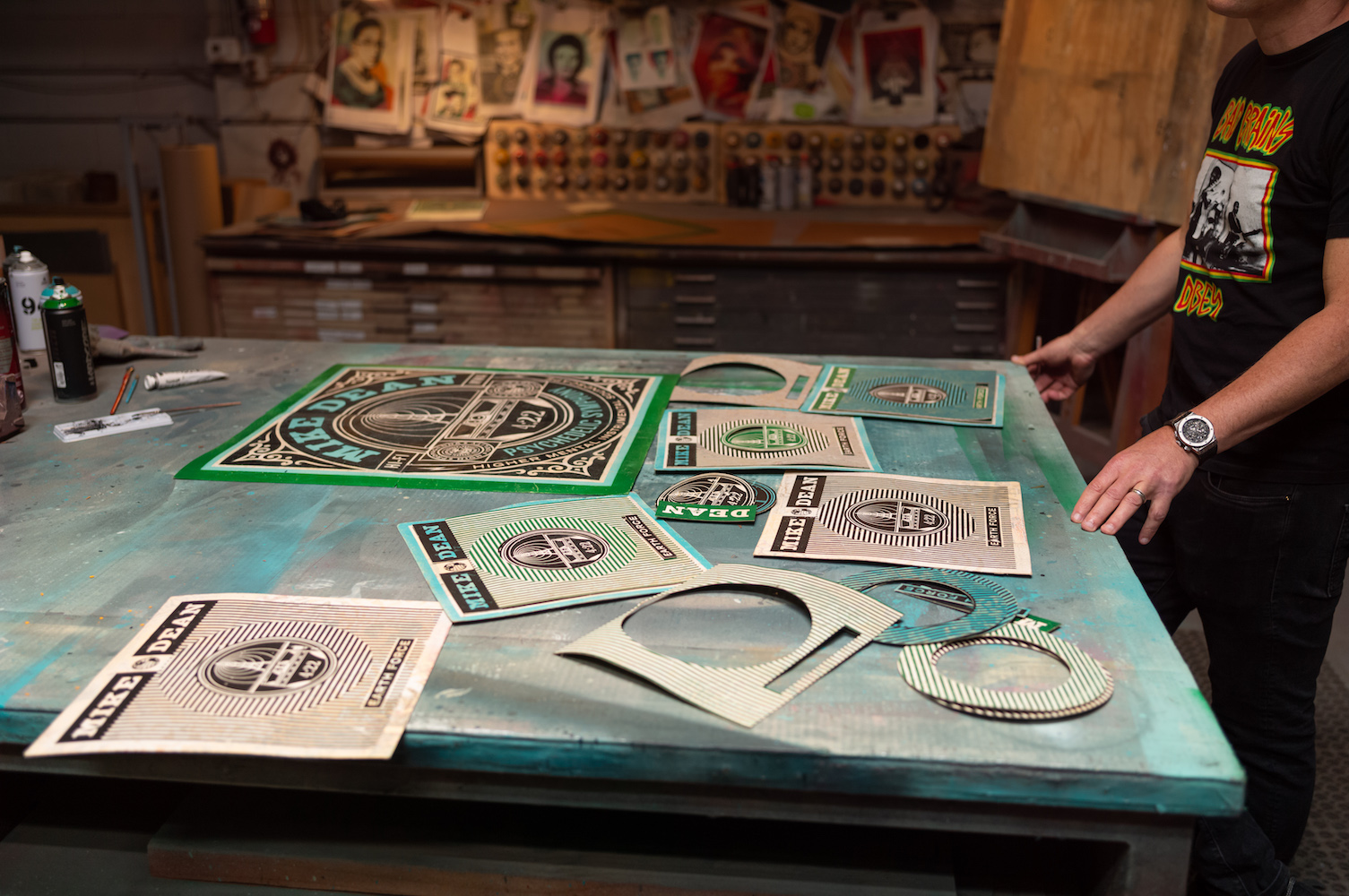 Shepard Fairey creating the exclusive physical artwork Earth Force and the album art for 4:22 in his Los Angeles studio, photo by Mike Allen.
Shepard Fairey creating the exclusive physical artwork Earth Force and the album art for 4:22 in his Los Angeles studio, photo by Mike Allen.
WHITEWALL: How do you feel art and music can connect us during a time when we are unusually physically distanced?
MIKE DEAN: Art and music are such powerful tools to make people come together for a common goal to help those in need. They can serve as immersive experiences for all people, whether they are together or not.
SHEPARD FAIREY: I think that art and music are both great forms of therapy that touch our emotions. Music is something that almost everyone appreciates, and I’d like to see visual art be equally widespread and broadly appreciated. Working with Mike on this project allows a really cool multisensory experience for the listener/viewer. I’m a huge music fan, and I am a DJ, so working on music projects is a very natural extension of my personality. Art and music can create universal reference points that each viewer/listener has their own relationship with, but also many people collectively can have a relationship with.
WW: Mike, what do you feel your role as a sonic artist and producer is today?
MD: It is really important for me to be a creative role model for the kids and other aspiring artists and producers.
WW: What does your latest album, 4:22, explore? How was it created?
MD: 4:22 is a stream-of-thought and live action album, made up of 80 percent freestyle. I performed and improvised half of the project on livestream through Twitch and Instagram Live, and the music created connects with the mysteries and wonder of the Earth.
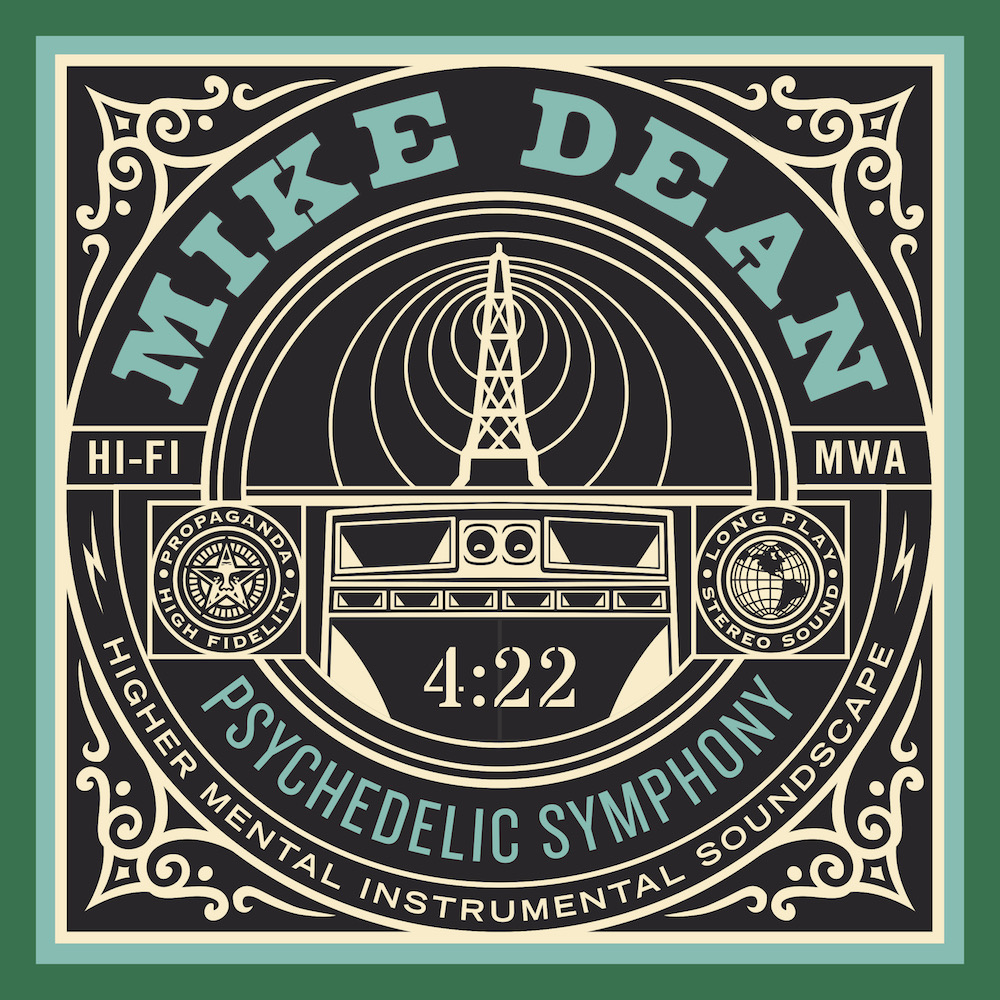 The cover art for Mike Dean’s album 4:22, created by Shepard Fairey.
The cover art for Mike Dean’s album 4:22, created by Shepard Fairey.
WW: In the NFT auction, unreleased music was for sale, and only auction winners will ever be able to hear the full tracks. Can you describe the music?
MD: The music within the NFTs is a psychedelic symphony of models and classic keyboard sounds.
WW: Debuting alongside 4:22 is a special NFT collaboration entitled “OBEY 4:22”—open-edition NFTs of three audiovisual editions of the “Cryptosonic” track. Can you describe the visuals of these NFTs?
MD: Our NFT collections are an audiovisual collaboration bringing together Shepard’s “OBEY” and my 4:22 album styles.
SF: The “OBEY 4:22” NFT collaboration was inspired by classic 12- inch square vinyl LP jackets. The artwork showcases radio wave transmission, a high-decibel sound system, stereo hi-fi technology, the Earth’s colors of blue and green, and the green herbs enjoyed to enhance a mind-expanding musical journey. Working on the motion piece was really fun and adds the additional cinematic component to the art and music experience, making it different from almost anything else that I’ve ever done.
WW: What was the starting point for creating these audiovisual works?
MD: The starting point was simple—it was a still-Shepard classic album cover coupled with a banging beat, “Cryptosonic.”
SF: I asked Mike what artworks of mine from the past were some of his favorites, and he shared some of the music he was working on, which sparked ideas for me, and then I began working on some pieces that referenced the classic 12-inch album format and some of the iconography we both thought made sense in relation to Mike’s music and his concerns about endangered species and global harmony. Sometimes the inspiration that’s the genesis for a project may not even be obvious to the end viewer, but it kickstarts the creative process.
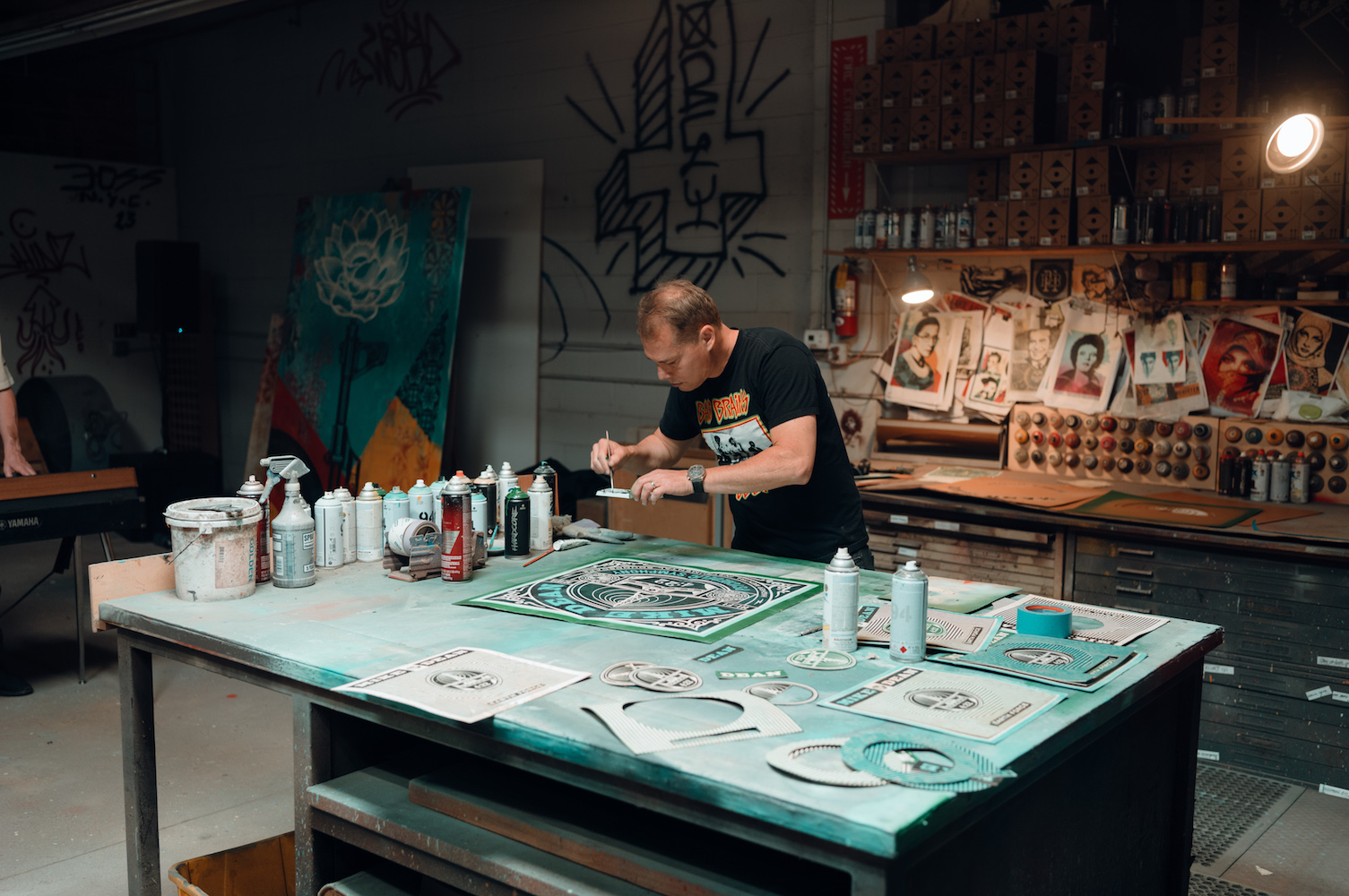 Shepard Fairey creating the exclusive physical artwork Earth Force and the album art for 4:22 in his Los Angeles studio, photo by Mike Allen.
Shepard Fairey creating the exclusive physical artwork Earth Force and the album art for 4:22 in his Los Angeles studio, photo by Mike Allen.
WW: As an artist, Shepard, what interested you about entering this digital space?
SF: The collaboration with Mike is my second NFT project. I was interested in the NFT space because any platform that empowers artists to self-publish and have an unmediated relationship with their audience has value. I’m a big believer in democratizing art, which often means sharing my work free to the public, but it is also great to democratize the work and monetize it. I say that especially with emerging artists in mind who are looking for revenue streams to survive.
WW: In addition, there are physical handmade prints of NFT “OBEY 4:22” art series. What’s seen here? Can you describe how those were created?
MD: Shepard can elaborate more on this, but basically the top audition spot gets a 24-by-24 classic piece of art and music.
SF: The top two tiers of the May 27 auction included fine art versions of the same imagery used for the NFTs. The fine art is not part of the NFT, but it is a real-world bonus item that I created in my art studio using screen-printing, collage, and traditional painting. Because I’m a believer in the value of art created and disseminated traditionally and digitally, I like the idea of having those two worlds cross over in harmony rather than be positioned as if they have some conflict, which I don’t think they do.
WW: How do you feel NFTs are impacting the art world?
SF: NFTs are forcing the art world to recognize the legitimacy and economic viability of digital art.
WW: Where do you feel the future of digital art is?
SF: I think that artists have always embraced tools that make their process more efficient and allow them to render things that they couldn’t with older tools. It’s somewhat ironic that the most celebrated artists are always the ones that push things forward during their era. Yet, the art world is often resistant to new technology as its artists are exploring it. I think digital art will become more and more accepted as one of many mediums alongside painting, photography, printing, sculpture, et cetera. Many artists are already working with a combination of traditional and digital techniques, myself included.
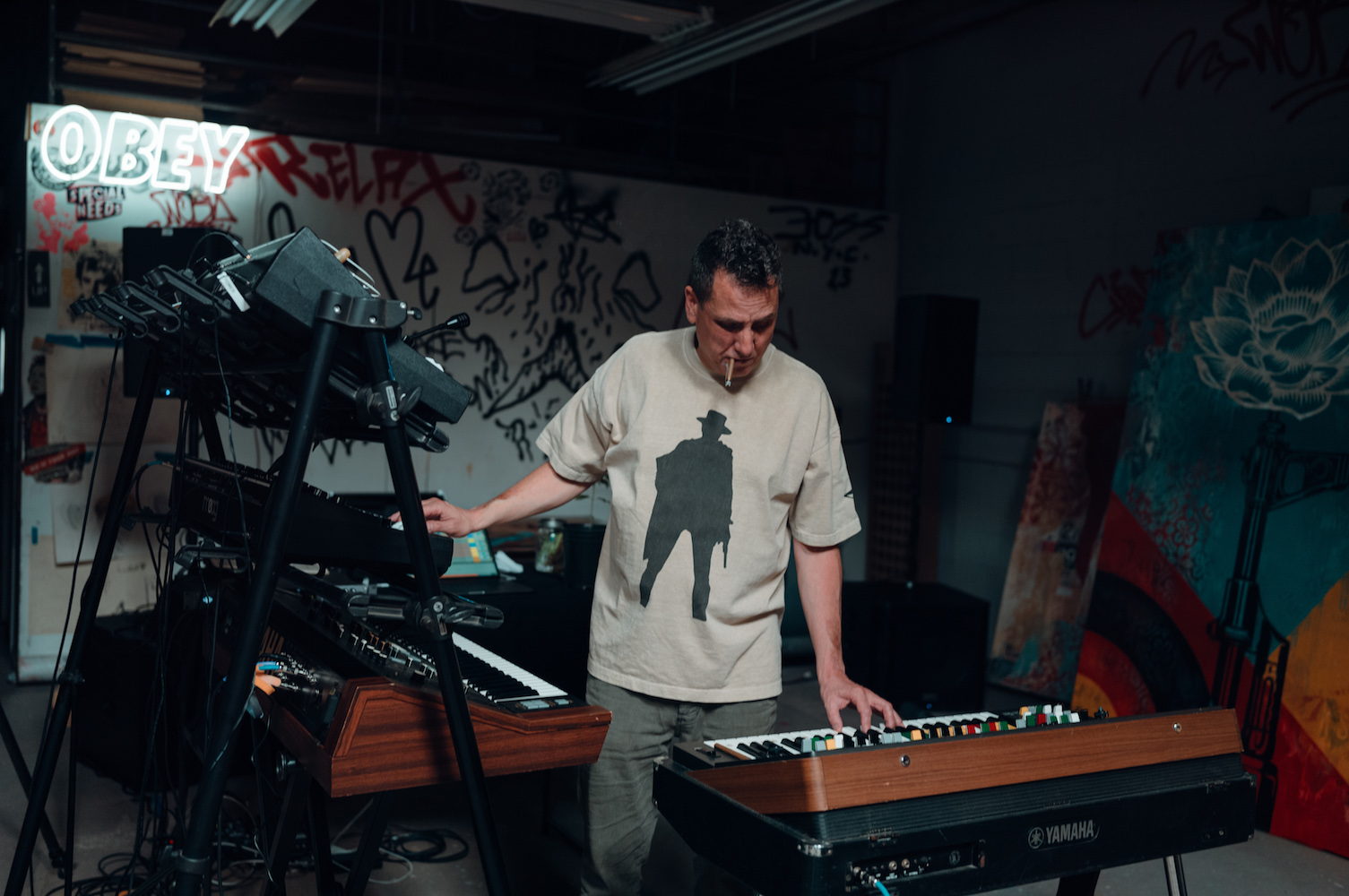 Mike Dean creating never-to-be-released tracks in Fairey’s Los Angeles studio, photo by Mike Allen.
Mike Dean creating never-to-be-released tracks in Fairey’s Los Angeles studio, photo by Mike Allen.
WW: How were your creativities impacted during the pandemic?
MD: I benefited from the time I got to spend alone during the pandemic because I was actually able to focus a lot more on my music and have less people in my pod.
SF: Even though I’ve missed seeing good friends during the pandemic, I’ve found the extra time to focus on my work to be very healthy psychologically, and my work has benefited from the time to experiment and my lower stress levels. I’ve also enjoyed the quality time with my wife and daughters.
WW: What are you working on next?
MD: Shepard and I are excited to have our auction. We plan to continue collaborating and creating, depending when our schedules permit us to get back in the studio together.
SF: I have two museum shows in 2022—one in Seoul, Korea, and one at the Dallas Contemporary Museum—and a large selection of works in the Beyond the Streets show in Shanghai










